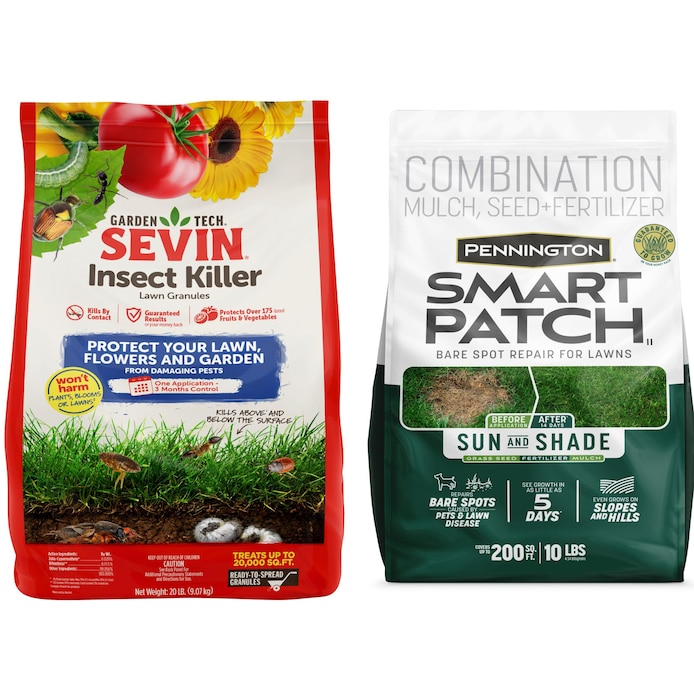Get Pricing and Availability
Items Included in this Collection
There are several types of damage in the lawn that may indicate grubs. Brown patches that don't green up in the spring may be the result of grubs feeding the previous fall. In late summer and fall, randomly shaped dead patches may indicate grubs. Birds, raccoons, skunks, moles and other small animals may tear up areas of your lawn at night looking for grubs. Turf that feels spongy or that lifts easily to reveal damaged roots or no roots at all may also be evidence of grub damage. These symptoms can also signify other lawn conditions. Checking the soil for grubs is the only way to confirm that your lawn has grubs and to determine if you need lawn pest control. -Make cuts 6 to 12 inches long and about 3 inches deep on three sides of a patch of grass. -Peel back the turf and look for grubs. -Check several areas and estimate the number of grubs per square foot of your lawn. -Use Sevin Insect Killer granules on infected area, as directed -Once you've finished checking for grubs, patch bare spot on grass with Pennington Smart Patch for new grass growth








